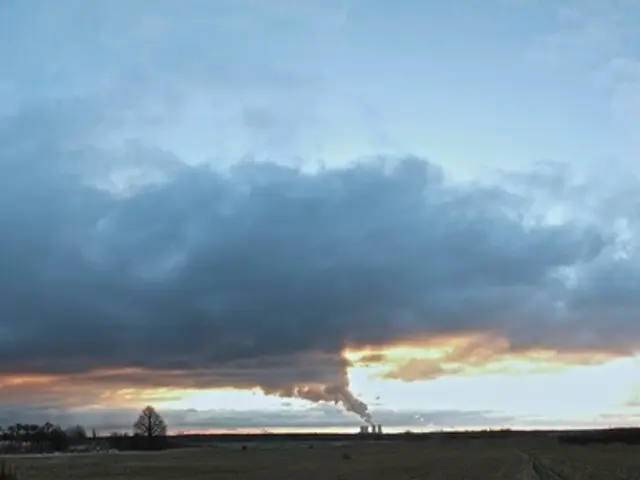Statistics Up Close: An In-depth Examination
Residual analysis, a fundamental tool in economics and regression applications, offers valuable insights for validating models, detecting outliers, diagnosing assumptions, and improving decision-making across various domains.
Key Applications of Residual Analysis
Model Diagnostics and Validation
Residual analysis helps economists and analysts verify whether regression model assumptions hold, such as linearity, homoscedasticity (constant variance of residuals), and normality of errors. Ensuring these assumptions are met is crucial for reliable inference and accurate predictions.
Outlier and Anomaly Detection
Large residuals highlight data points that deviate significantly from the predicted relationship, indicating possible outliers, errors in data collection, or special cases that need separate treatment.
Improving Predictive Accuracy
Studying residual patterns can reveal model misspecification or omitted variables, guiding model refinement to enhance fit and predictive power. For example, in multiple linear regression models predicting real estate prices or financial forecasts, residual analysis ensures the model appropriately captures underlying relationships.
Economic Policy and Impact Evaluation
Residual analysis assists in evaluating policy or program impacts by clarifying unexplained variation and helping to correctly specify models in experiments or observational economic studies. It can, for example, support determining if the observed effects in export value or income due to an intervention are consistent and not driven by extreme outliers or heteroskedasticity.
Concrete Case Studies and Contexts
Blended Finance and Sustainable Investing
Quantitative modeling and residual analysis can be used to validate risk models and impact assessments of projects involving complex economic and environmental variables, such as the Land Degradation Neutrality Fund mobilizing private capital for sustainable land management.
Real Estate Pricing
Multiple linear regression models predicting property prices from variables like location, size, and number of bedrooms rely on residual analysis to check model adequacy and to detect properties whose prices deviate significantly from predicted values, which can signal special market conditions or data issues.
Financial Forecasting
In stock price or economic indicator forecasting, residual analysis helps in assessing the goodness of fit of models involving multiple macroeconomic factors such as interest rates and inflation, thus ensuring better investment strategies and risk management decisions.
Agricultural Yield and E-commerce Sales
Farmers predict crop yields based on weather and soil quality, while e-commerce companies analyze how pricing and promotions influence sales. Residual analysis enables refining these models by revealing systematic errors or unmodeled influences, allowing stakeholders to optimize operational decisions.
Summary
Residual analysis is a powerful tool for:
- Diagnosing model validity and assumptions,
- Identifying outliers and influential data points,
- Enhancing model accuracy and robustness,
- Supporting evidence-based decision-making in diverse fields such as sustainable investment, real estate, financial forecasting, agriculture, and retail analytics.
By systematically analyzing residuals, practitioners improve model reliability and the quality of economic insights drawn from quantitative analyses. Deviations from normality, linearity, or constant variance can provide insights into model improvement or potential issues. Residual analysis can be helpful in analyzing complex data and can be a great help to researchers and analysts.
Advanced methods, like quantile regression or transforming variables, can give more accurate results in residual analysis. Residual analysis plays a crucial role in validating statistical models, and for successful residual analysis, it's important to look at factors like heteroscedasticity, normality of residuals, independence of residuals, and the absence of influential points. Residual statistics help assess the goodness of fit, identify outliers, check for assumptions violations, and improve the model's predictive accuracy. They can even provide insights into the accuracy and validity of the model's predictions and help identify any underlying patterns or trends. Moreover, residual statistics can provide valuable insights and help in detecting fraudulent transactions, as demonstrated in a study in the Journal of Data Science.
- Economists and analysts employ residual analysis to verify the validity of assumptions, such as linearity, homoscedasticity, and normality, in their regression models to ensure reliable inference and accurate predictions.
- Large residuals in data sets can highlight anomalous data points indicating outliers, errors in data collection, or special cases that require separate treatment.
- Studying residual patterns can reveal model misspecification or omitted variables, guiding refinement to enhance model fit and predictive power in areas like multiple linear regression models predicting real estate prices or financial forecasts.
- Residual analysis is vital in economic policy and impact evaluation by clarifying unexplained variation and helping to correctly specify models in experiments or observational studies.
- Quantitative modeling and residual analysis can validate risk models and impact assessments of projects involving complex variables, such as the Land Degradation Neutrality Fund, which mobilizes private capital for sustainable land management.
- Residual analysis of property prices in multiple linear regression models, considering factors like location, size, and number of bedrooms, helps detect properties whose prices deviate significantly from predicted values, signaling market conditions or data issues.
- In stock price and economic indicator forecasting, residual analysis is essential for assessing the goodness of fit of models involving multiple macroeconomic factors like interest rates and inflation, enhancing investment strategies and risk management decisions.
- Agricultural yield and e-commerce sales can be analyzed using residual analysis, refining models by revealing systematic errors or unmodeled influences, enabling stakeholders to optimize operational decisions.
- By systematically analyzing residuals, practitioners improve model reliability, and the quality of economic insights drawn from quantitative analyses can be improved in diverse fields such as sustainable investment, real estate, financial forecasting, agriculture, and retail analytics.
- Advanced residual analysis methods like quantile regression or variable transformations provide more accurate results, and the understanding of residual statistics helps assess model predictive accuracy, identify outliers, check assumptions violations, and provide valuable insights in detecting fraudulent transactions.




